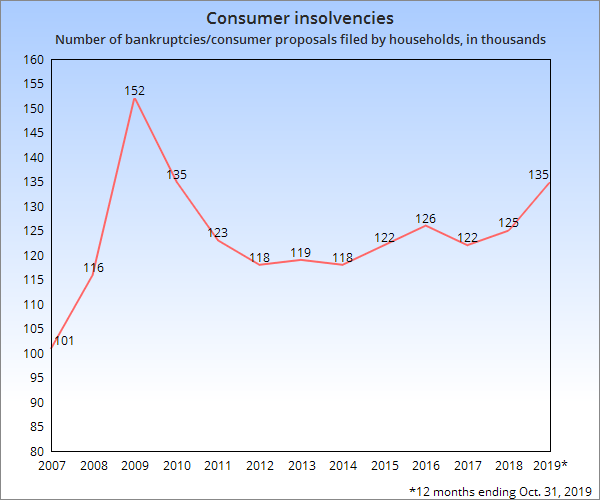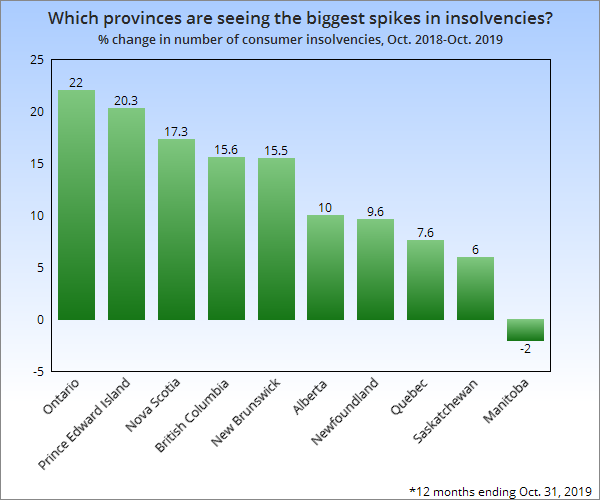MONTREAL ― Canadian households are showing signs of cracking under the strain of growing debt burdens, new data shows ― and Ontarians are being hit particularly hard.
The number of consumer insolvencies jumped by nearly 11 per cent from September to October, according to the latest monthly report from the federal Office of the Superintendent of Bankruptcy.
In the 12 months ending in October, more than 135,000 Canadian households declared bankruptcy or filed a consumer proposal, an increasingly popular alternative to bankruptcy. That’s the fastest annual pace since 2010, when Canada’s economy was being rocked by the global financial crisis.

Ontario has seen the largest spike in consumer insolvencies, up 22 per cent in October, compared to a year earlier. Prince Edward Island (up 20.3 per cent), Nova Scotia (up 17.3 per cent) and British Columbia (up 15.6 per cent) also saw large increases.

Consumer debt experts ― some of whom predicted the spike well before it began ― say insolvencies are being driven by record-high household debt levels, which have made consumers vulnerable to even small changes in income or interest rates.
According to research from the Canadian Association of Insolvency and Restructuring Professionals (CAIRP), it takes around two years for interest rate hikes to have an impact on consumer bankruptcies.
Thus, the rate hikes seen in 2017 and 2018 ― when the Bank of Canada (BoC) drove up its key lending rate to 1.75 per cent from 0.5 per cent ― are just now impacting consumers.
Watch: All the ways Canadians are now totally different from Americans on finances. Story continues below.
The BoC has since put rate hikes on hold, even as central banks elsewhere in the world have cut rates in response to a slowing economy. Despite being near historic lows, Canadian interest rates are now among the highest in the developed world, and the BoC could soon find itself under pressure to follow other countries and cut rates.
But with the housing market showing signs of heating up again, most experts say the Bank is unlikely to cut rates, as that would heat up household debt even further.
In a speech last month, Bank of Canada senior deputy governor Carolyn Wilkins explained that while lowering interest rates would make things easier on consumers in the short term, it would drive up debt levels and make them more vulnerable in the long run.
“Lowering interest rates could provide some insurance against downside risks to inflation,” she said. “However, this insurance would come at a cost in terms of higher household vulnerabilities down the road.”
The Bank of Canada makes its next interest rate announcement on Wednesday morning. Prices in the bond markets suggest investors expect no change in rates.